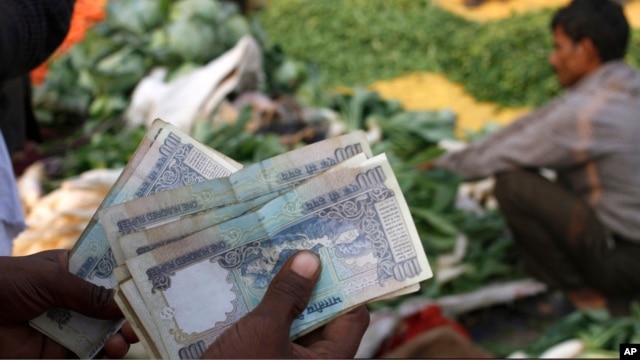
Gurdet Singh, who farms about 100 acres of fertile land in Wazidpur village in northern Punjab state, a prosperous agricultural region, plans to buy a bigger, new tractor to ease his work on the farm.
He says his two tractors have become old and require a lot of repair. Singh even hopes to buy a car after he pays off the loans for the tractor.
The automobile sector, which witnessed a huge slowdown in the last two years as the economy slumped to a decade low, is pinning its hopes on consumers like Singh in the country’s vast rural areas.
Vishnu Mathur, who heads the Society of Automobile Manufactures of India, says that while demand in urban areas for passenger cars continues to be sluggish, the upbeat rural economy provides a silver lining.
“The recession we have been seeing is largely an urban phenomenon," Mathur noted. "The monsoons have been good and the harvest season is now round the corner, so if we have a good harvest, then I am sure there will be a further buoyancy coming out of the rural market.”
The optimism in the automobile industry signals that the worst could be over for the Indian economy, which is expected to clock growth of less than five per cent when the 2013 fiscal year ends in March.
Experts are pointing to the so-called “green shoots.” The farm sector, which sustains two thirds of the country, has posted healthy growth. The rupee, which lost more than 20 per cent of its value versus the dollar last year, has recovered some ground and stabilized. Exports have revived.
Rafique Ahmed, head of the Federation of Indian Export Organizations, says exports are being boosted by a cheaper rupee and better global economic conditions.
“The prospects are good. Our rupee has helped us," Ahmed said. "Secondly the market also has stabilized in Europe and America and even in ASEAN (Association of South East Asian Nations) countries it is better. So, exports should grow in a positive tone…slowly it will come to double digit.”
But even as growth is widely expected to pick up from the low point it hit last year, economists say it is unlikely to climb back to the heady numbers which had put India among the world’s fastest growing economies. Just three years ago (2011), India’s economy expanded by more than nine per cent.
Now the expectations are much more modest. Finance Minister P. Chidambaram has said growth will accelerate to more than six per cent in 2014, and return “step-by-step” to its potential of eight percent.
Economists say the key to boosting India’s economy is to revive confidence among investors, both domestic and foreign. Worried by lack of reforms and bureaucratic roadblocks, private investment has reduced to a trickle. Most businesses are now waiting on the sidelines for the outcome of national elections to be held by May.
Chief economist at credit ratings company, CRISIL, in Mumbai, D.K. Joshi, says the pace of economic recovery critically hinges on the outcome of those polls.
“If you get a fragile mandate and a coalition of not so like minded people, under these conditions sustaining high growth is very difficult," Joshi explained, "and if you get a decisive mandate and you get one single political party who is able to push the projects much faster, it will lift the sentiment of the private sector. If those things happen, we do believe growth can lift to a little over six and a half percent.”
The decade-long spell of high growth which India experienced until 2011 had catapulted millions of people into the middle class and created new jobs which the country needs for its huge, young population. But economists are not so sure that India can achieve that again.